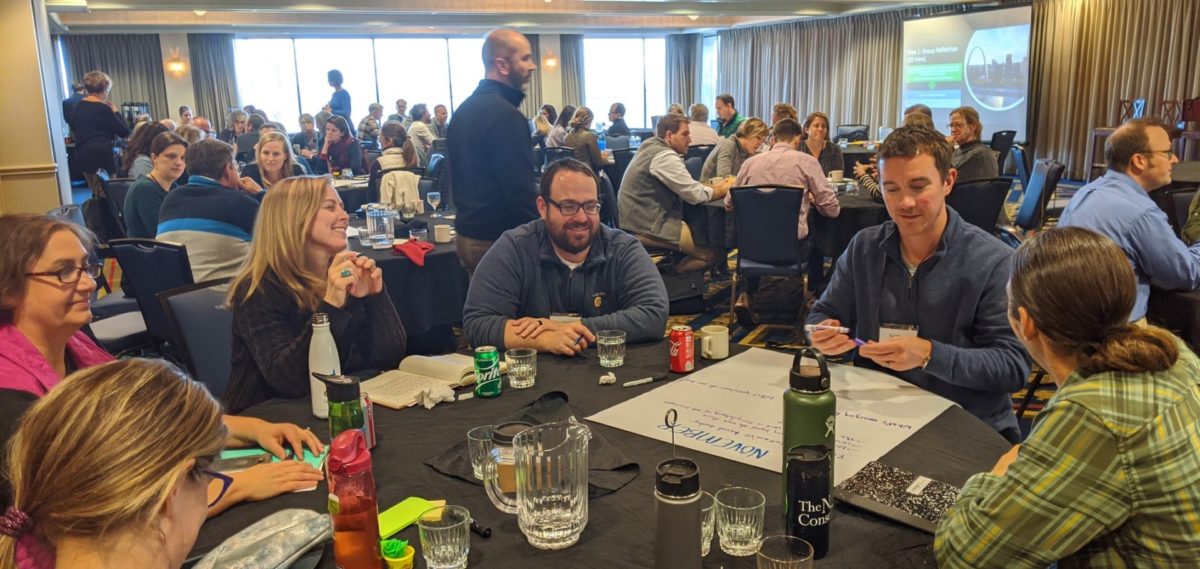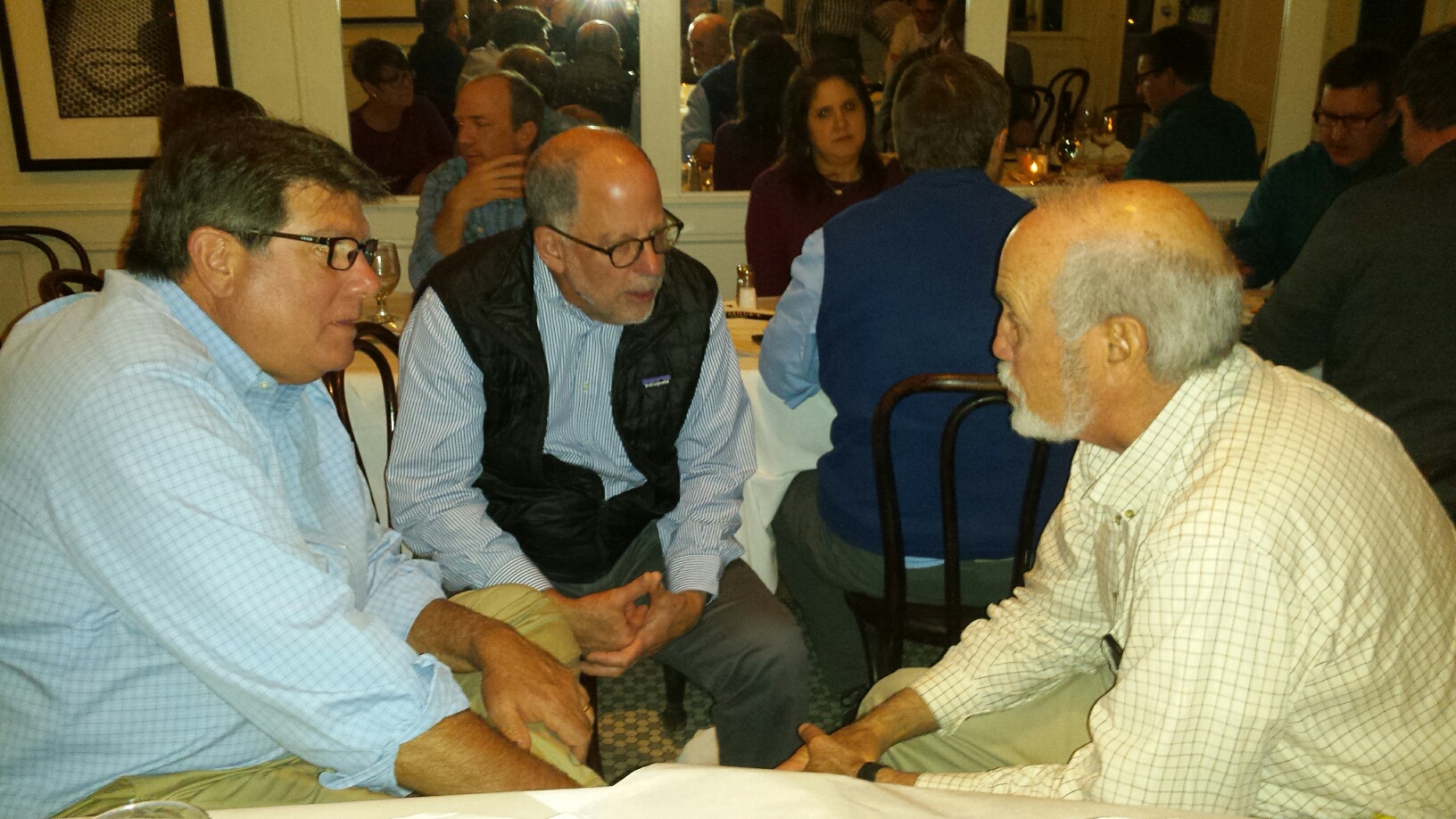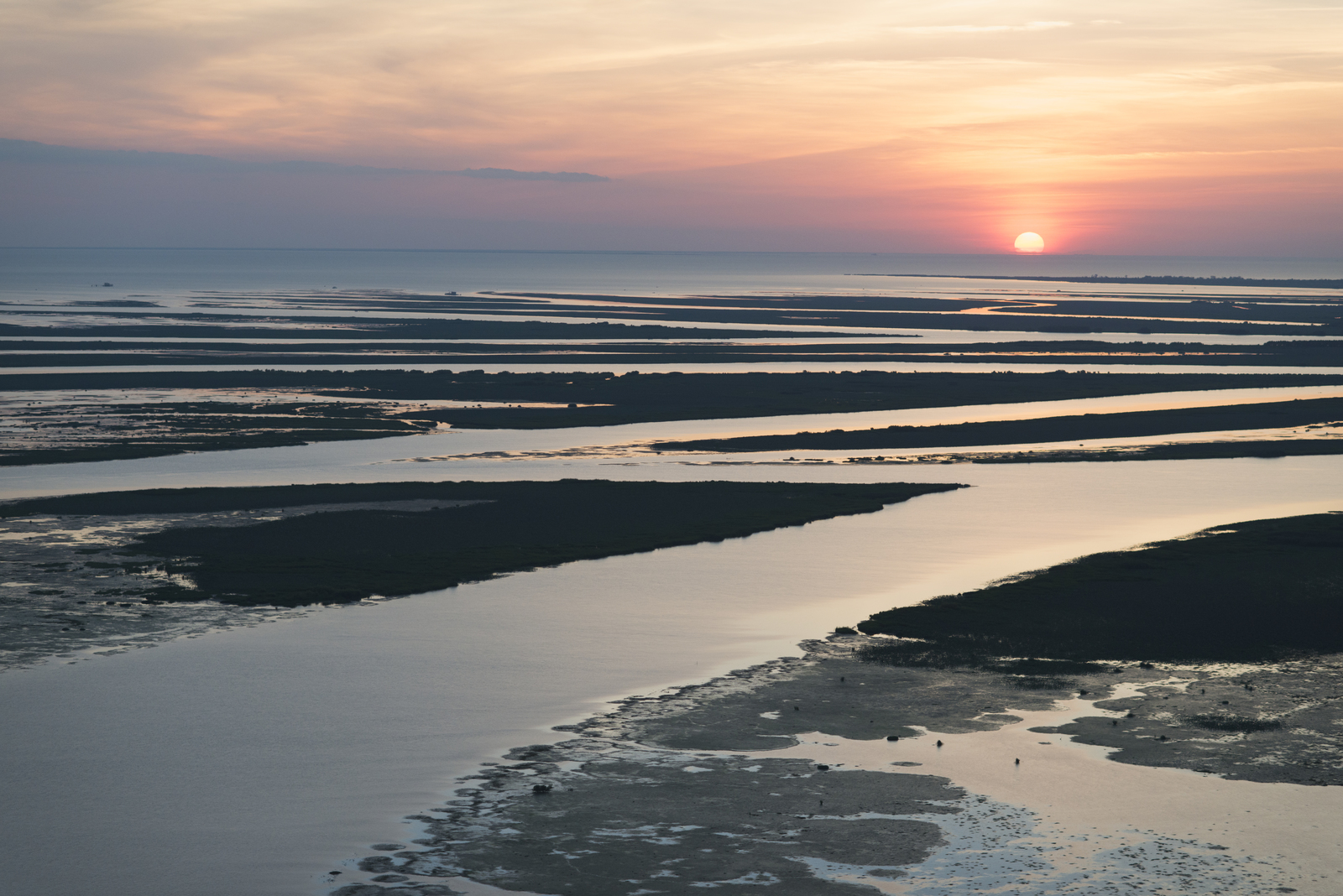
by Peter Senge
The epiphanies of Jackson now had to be shared. Just a month later, a larger team of workstreams came together in St Louis, followed by an even larger stakeholder and sponsor meeting in New Orleans in March.
While the feelings of new energy and alignment were very meaningful for those in the Jackson meeting, it was important to connect others to the substantive conclusions emerging and see how the energy from Jackson could be shared more widely. So, the initial focus for the meeting was the three ‘leverage points” and their implications.
“The St. Louis meeting wasn’t about a couple of people powering through and taking charge. It was about enabling a team,” says Hack. The conversation covered all three major work streams, including the system maps and the hypothesized leverage points from the Jackson meeting.
The meeting also introduced another tool for looking at the system as a whole: geographic maps compiled with data from the EPA and USGS that showed measured nutrient flows from all the major rivers flowing into the Mississippi.

“St. Louis got uncomfortable for some,” says Michael Reuter, “with big maps on the wall with all the states listed in terms of their contribution of nutrients to the river. The Mississippi basin covers 40% of the country but there are states where the nutrients are clearly predominantly coming from. The Wabash (Indiana) as the top contributor – 11% of both N and P. We can’t address the dead zone issue without addressing it. Rob McKim (then Central Division Director of TNC) had an epiphany looking at the pollution maps of nitrogen and phosphorous flows into the Mississippi, which were mostly out of Iowa, Illinois, Indiana, and Ohio. Deep dark red and black splotches; “Do you know what I see? I see a stage four cancer patient. What are we going to do about that?”
“In this, we recognized two things,” added Reuter. “We had to target our resources to have the impact we wanted. We can’t change the size of the dead zone unless we work in a certain number of static watersheds. The big contributors other than the Wabash: the Iowa Cedar River, the Rock River in Illinois, and the Miami River in southern Ohio. But we also cannot only work in high contribution areas because the size of basin is so big—we must work a little everywhere. This dual focus was something people struggled with.”
As did they struggle with putting into practice what they had been learning about listening and conversation skills. Midway through the meeting, “frustration grew as we were all starting to talk past one another again,” observed one TNC veteran. The old ways were re-asserting themselves, and “some people were getting ready to withdraw in fear this was the same old same old,” said Anne Murray Allen of Conversant. But some were also starting to see that the larger intent of the conversation work was to shift relationships beyond pretense, where the facade of being collaborative is preserved at the expense of talking more candidly and exploring together genuinely conflicting views in ways that might shift the status quo. “I vividly remember the St Louis meeting in 2015 where Conversant staff helped us get through our pretenses and become truly aligned on the systems levers,” says Clemens. This alignment and the consequent re-allocation of resources like time and money would probably never have happened in a “business as usual” meeting.
And it was exactly business as usual that was changing. “I remember the group struggled with the concept of reciprocity,” said Glendening, “in terms of states being asked to share their resources with one another.” This conversation got to the heart of the traditional state control of state programs, and also opened up totally new avenues of ongoing collaboration. “I made a plea for reciprocity. “ said Hack. “Given that Nebraska was not a major player in the early conservation work, I wanted to find a role to support this new work with a new way of working together. We had to figure out how to build a durable way of collaborating, a way that would endure the many pauses between our meetings.” “My philosophy has been to give money to others without asking for something in return,” says Glendening. “I spoke to that by way of a personal example in the meeting and it seemed to move people.” The example involved Bob Bendick, Gulf Program Director of TNC, reaching out to her as a new Iowa State Director and telling her he was there to help her raise money and would fly with her to D.C. to call on government and funders on behalf of Iowa. “This was so touching to Jan, she was in tears telling the story,” said Murray Allen. It was a powerful example of what it actually meant to work together across boundaries to be successful, and “it shifted the mood in the room,” said Murray Allen.

One of Hack’s direct reports, Jason Skold (Missouri River program lead), followed and touched a nerve with, in Hack’s words, “a key conversation around inclusion and what he was for. In the past, we had always spoken up about what we were against,” adds Hack. “It was a habit in TNC to lead with what I’m against,” said Reuter. “Someone would throw up an idea and everyone would say what doesn’t work about it—they’d lead with concern.” Shifting that perspective to focusing on what “we were for” was key, in Hack’s mind to boosting “our alignment as a spatially dispersed team with no clear hierarchy.” Leading with what we are for opens up possibilities for collective action.
Listening to the personal journaling reflections shared at the end of the meeting, Hack felt it had “became apparent that we were learning about being a part of something bigger, and this released a lot of energy. This was all tied to making sure people were heard. We don’t by default always practice good behavior or reflection; it’s always needed reinforcement and practice.”
By the time the team had its final report out meeting in New Orleans, the circle had grown considerably to include diverse TNC stakeholders, sponsors, and a few trustees. Learning was shared from all the work streams and recommendations for next steps. In the meantime, the “governance” team had re-named themselves “the collaboration team.” “Everyone got fundamentally aligned over feeling like they were in a collaboration, not under governance,” said Reuter. “That was a breakthrough.”
The governance/collaboration team developed a set of guiding principles starting with ‘One River,’ to express the aim of, in Glendening’s words, “aligning on how we needed to work together going forward, whether we wanted to focus on conservation outcomes or collaboration outcomes.” The principles are in use to this day:
- One River
- Transparency
- Trust
- Alignment
- Impact
- Context, not control
“We were becoming more and more comfortable with the emergent adaptive nature of both the work and the organization,” said Reuter, “In this, the organization was mimetic of the work itself.”
The whole process of slowing down to be more inclusive was also taking root. Glendening said they were coming to see how crucial it was to make “sure a wide variety of people are involved throughout a dialogue like this… This strengthens the resulting strategy. We can always move faster later.” Along the way, it was reassuring to the core team to see that other key stakeholders, especially trustees, understood why changes in how they worked were important and were often even out in front of the team in supporting them. “I remember the St. Louis meeting,” says Glendening, “(as) the first time we invited a (state) trustee. I brought one of mine, John Aschenbrenner from Iowa. He kept making the point, ‘This doesn’t have to be this hard.’”

Brenda Shapiro, TNC Board Member
The New Orleans meeting also resulted in another invitation by the Millikens for a further funding proposal, as well as initial engagement with another board member and potential sponsor, Brenda Shapiro. So, progress on the third high leverage area – securing system donors – was starting to occur, which was an important antidote to fears that few other funders would stick their necks out for such an audacious project.
